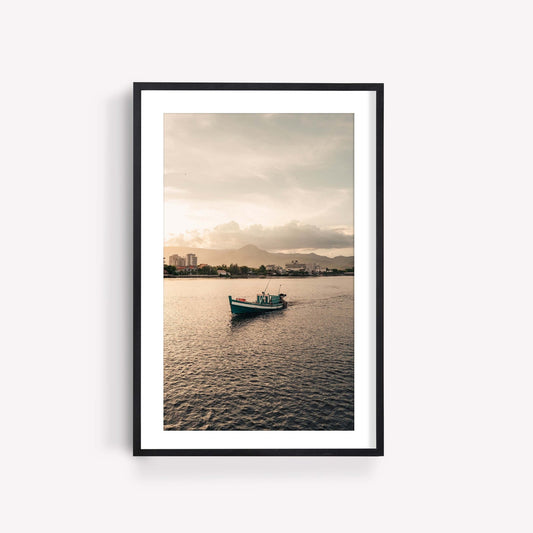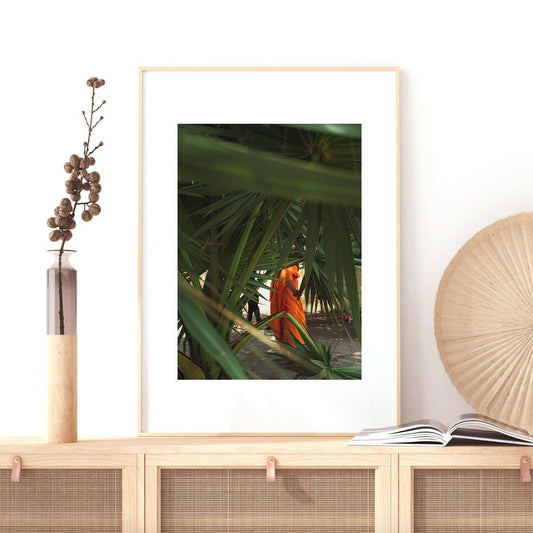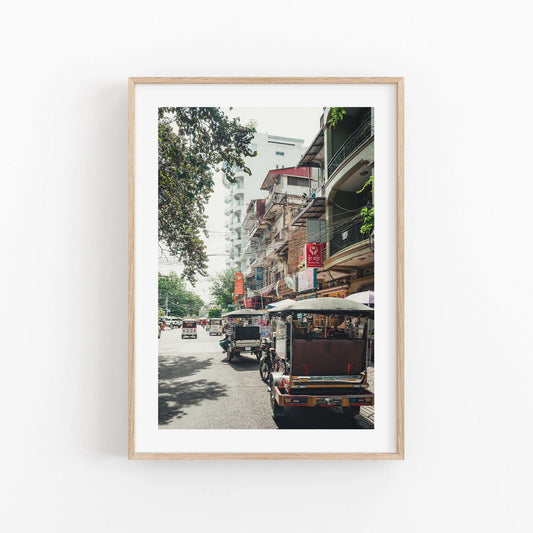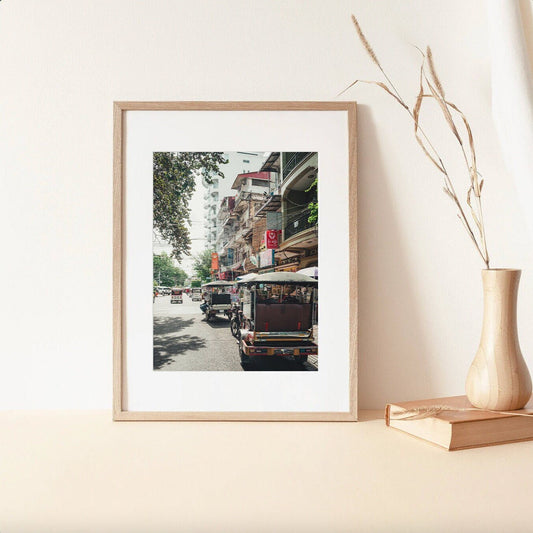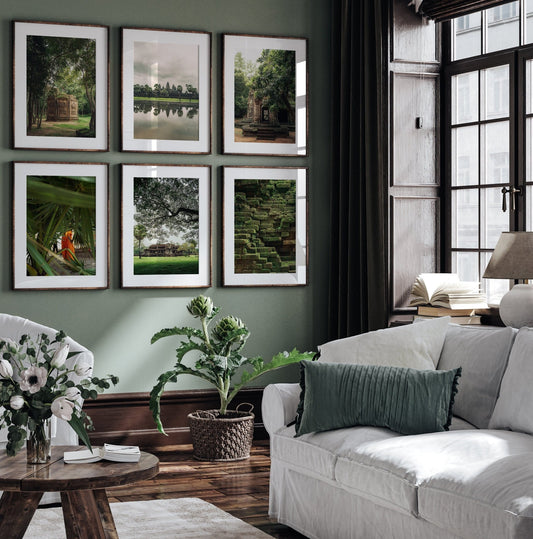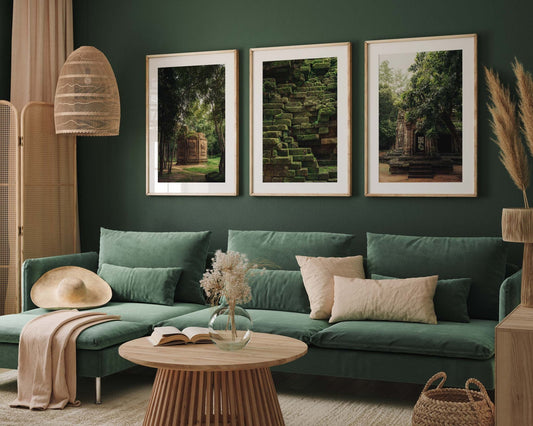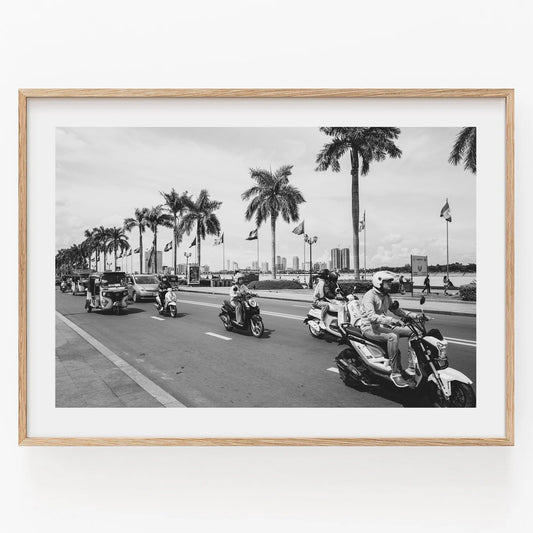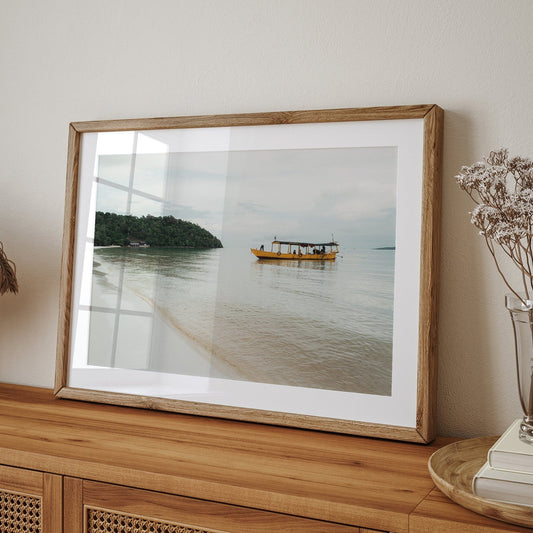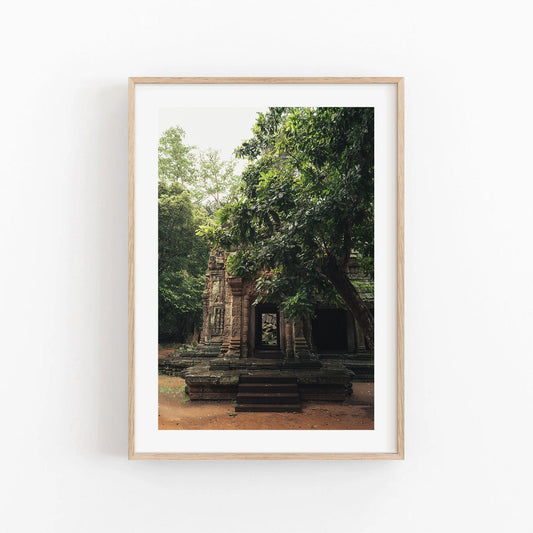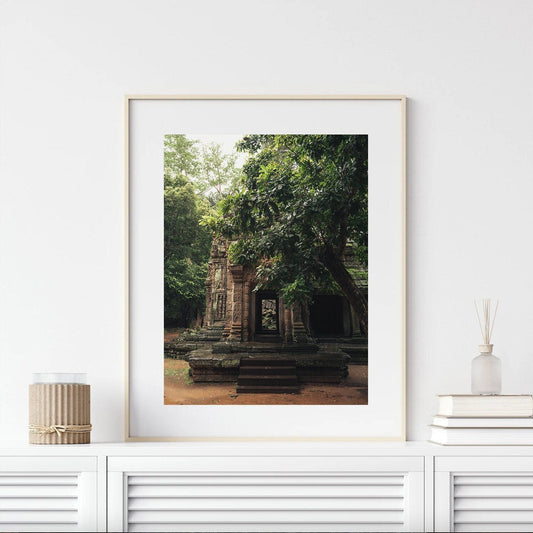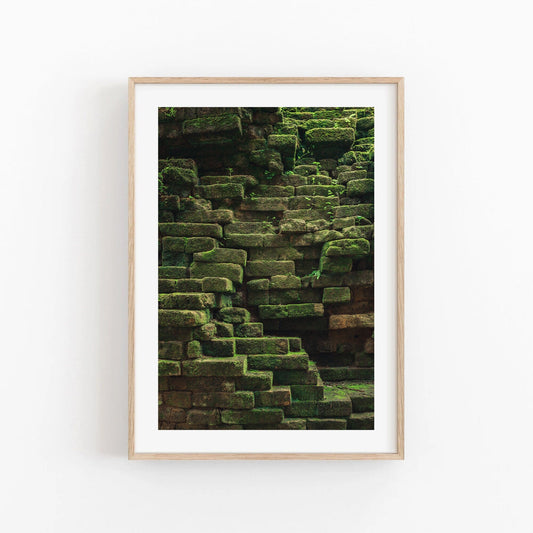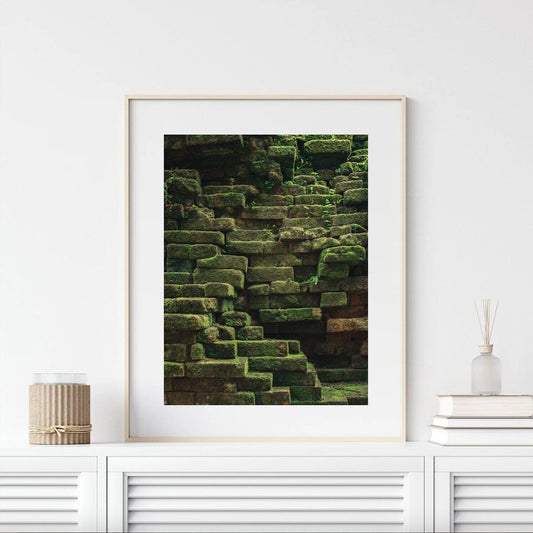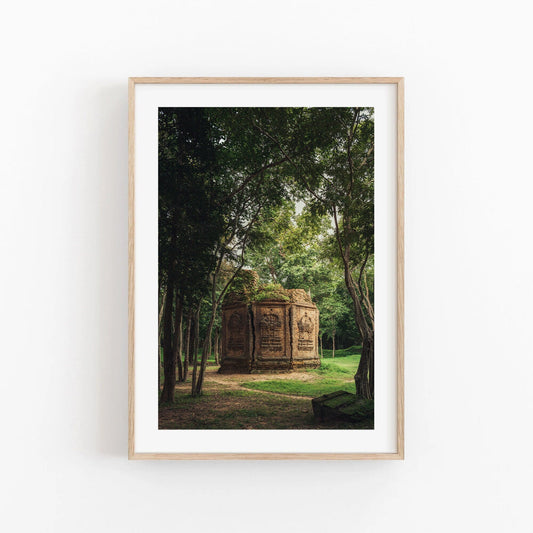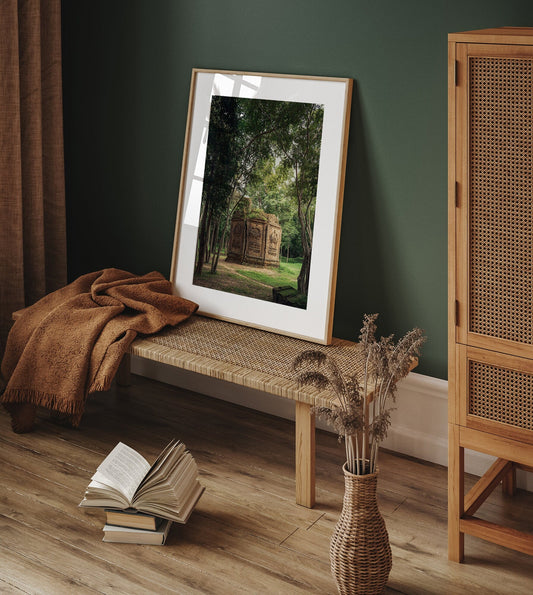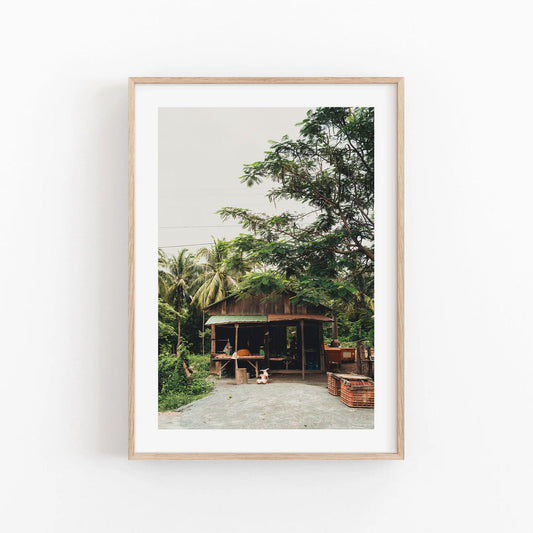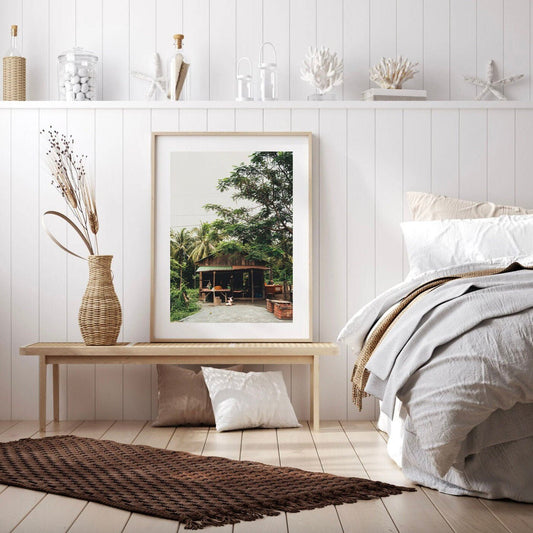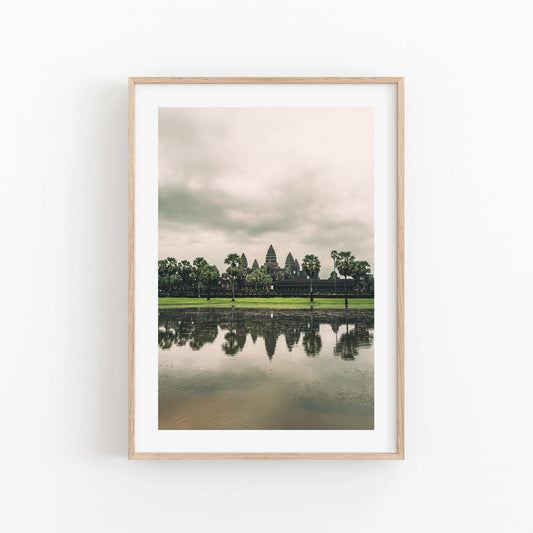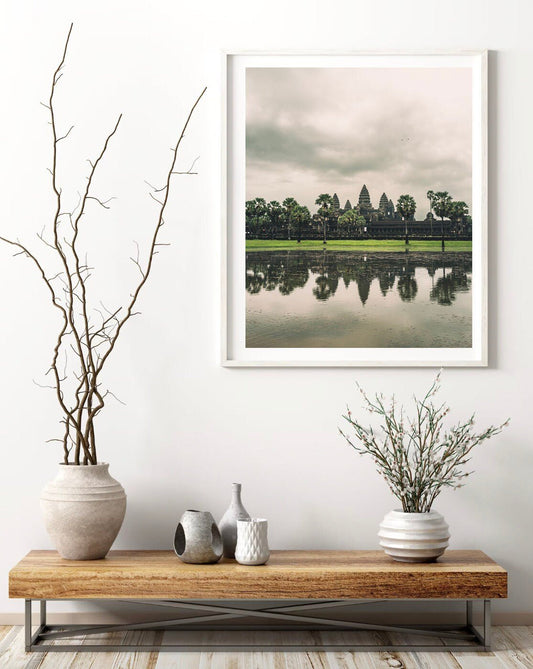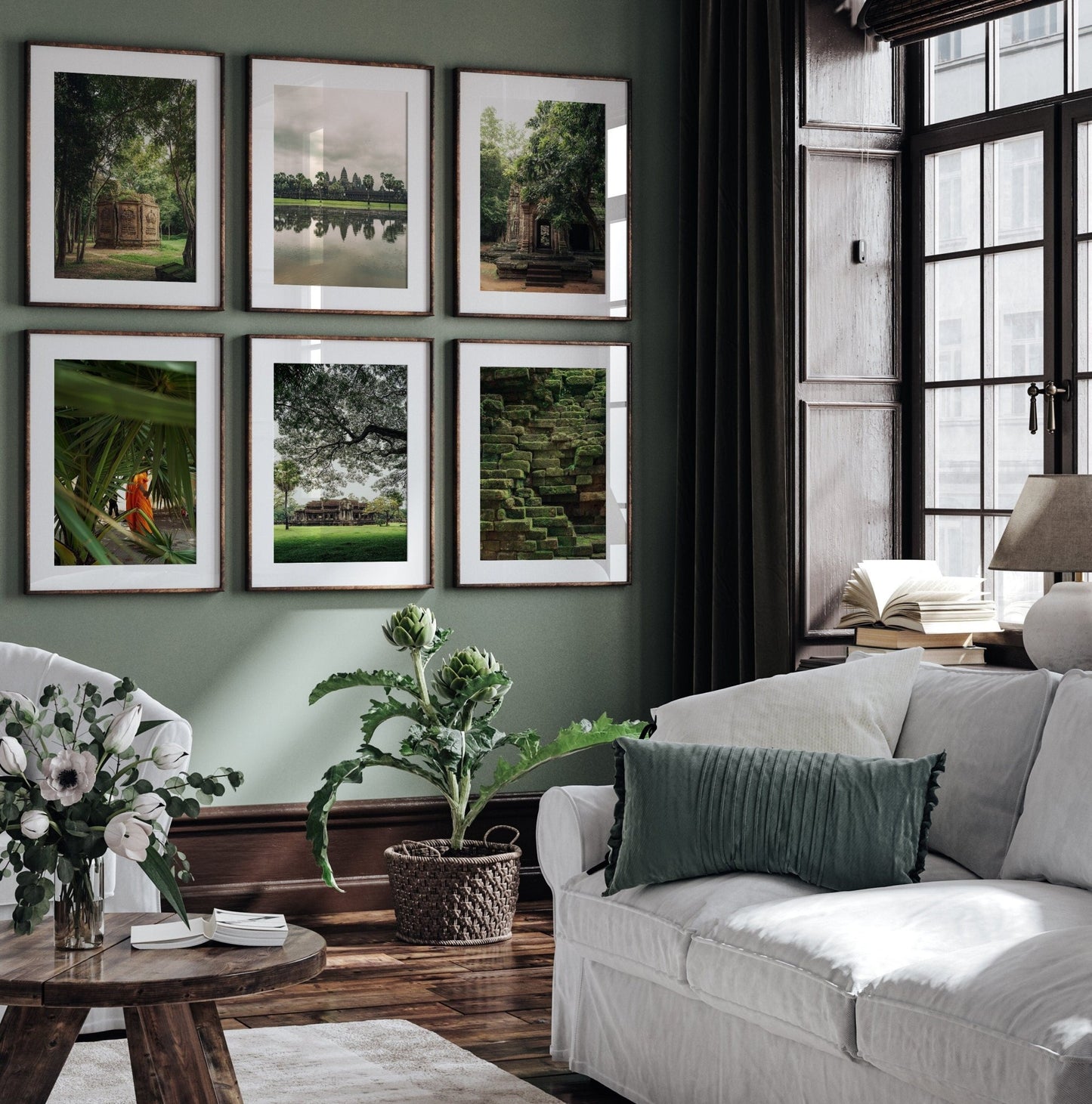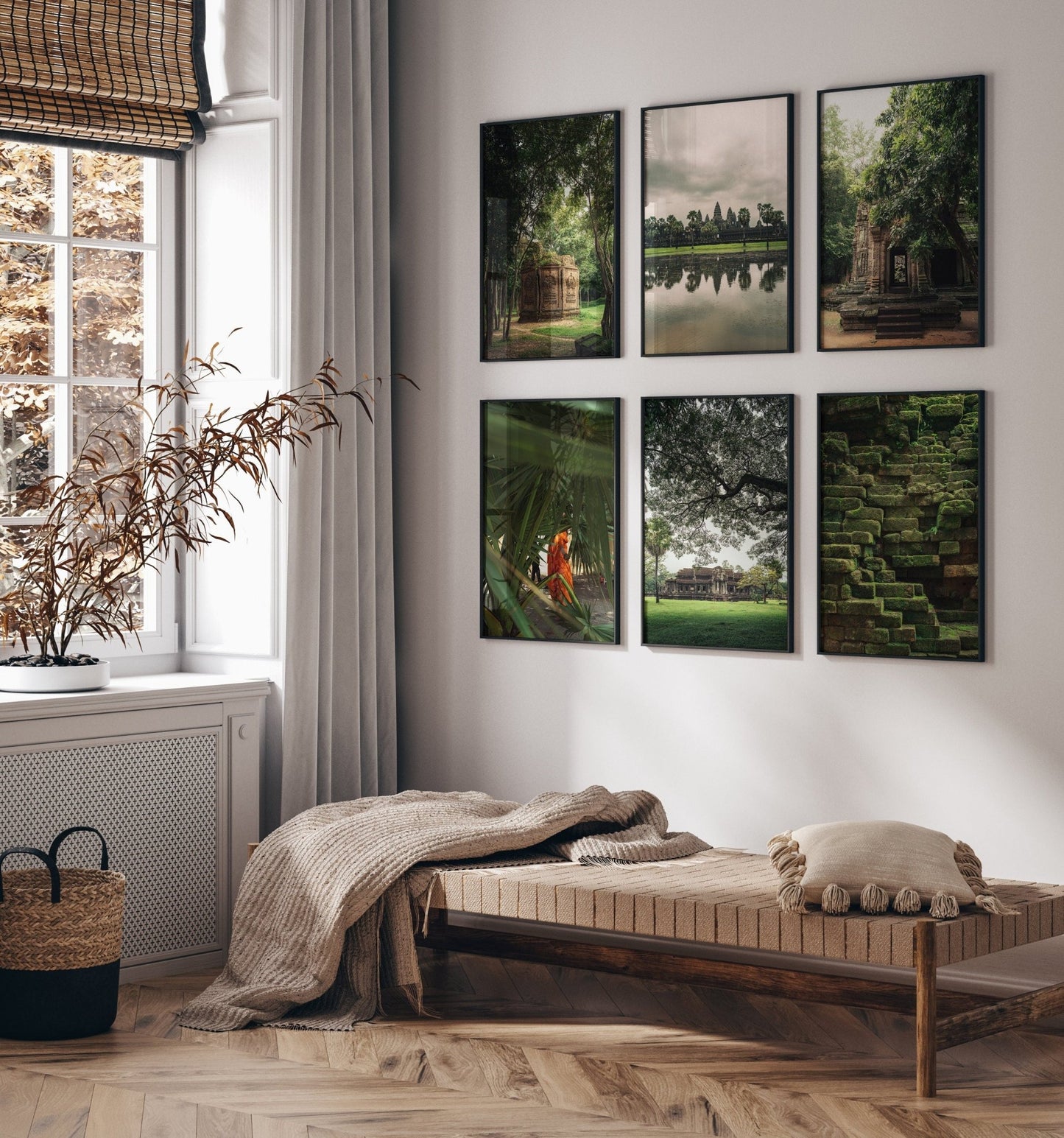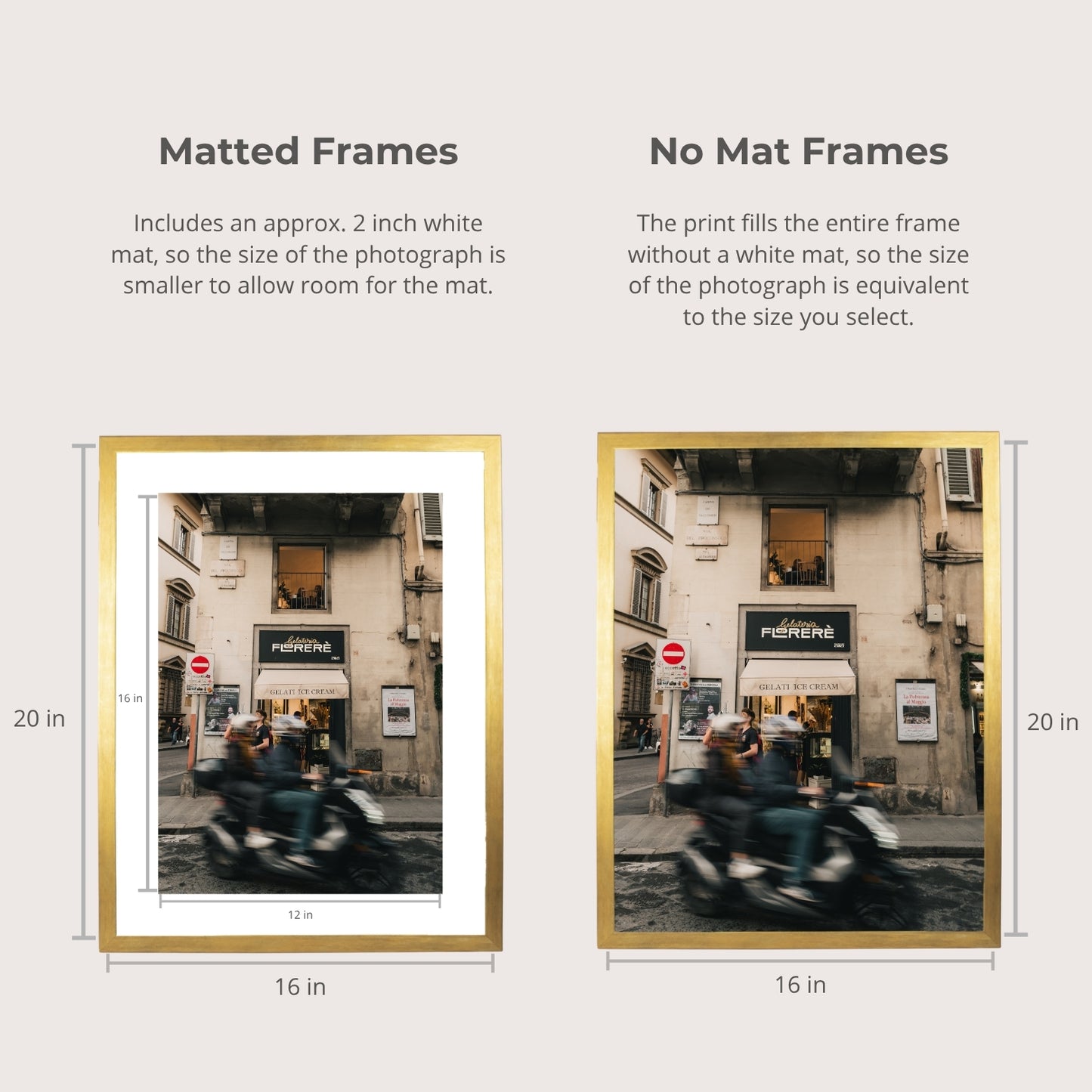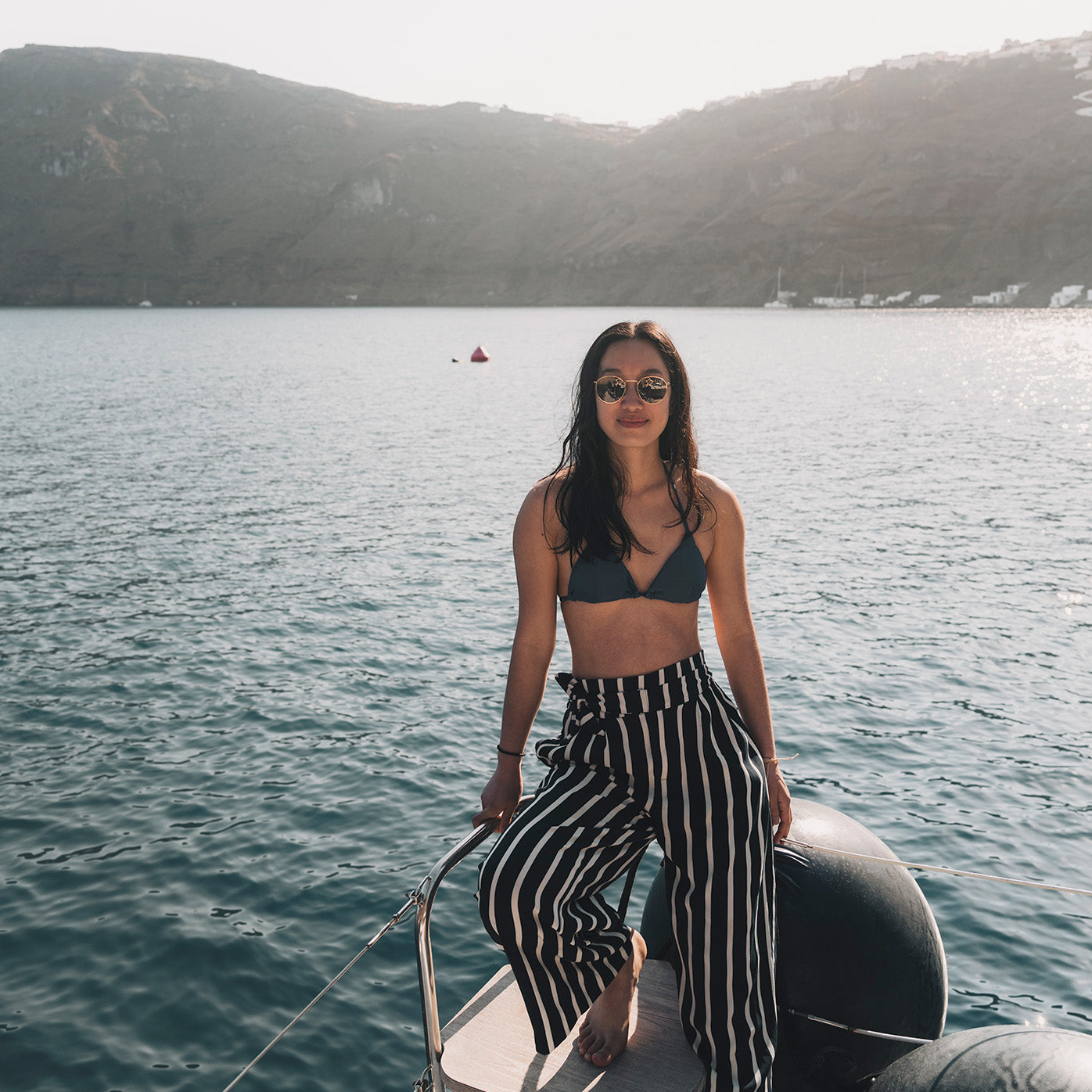Cambodia is a country with remarkable resilience, history, and natural wonders. It offers timeless beauty, from ancient temples like Angkor Wat to serene beaches.
Emerging from the devastating Cambodian genocide merely a few decades ago, it's now embracing tourism for economic recovery.
I visited Cambodia with GAdventures on this tour and learned a lot about the country in ways that I didn’t expect. It was both heartbreaking and hopeful, calming and chaotic.
Here is my ultimate travel guide as to where to visit and the best things to do in Cambodia for 10 days.
Affiliate Disclaimer: Certain links in this article are affiliate links. When you click on one of those links and purchase, I will earn a small commission at absolutely no cost to you. Please note that I only promote products and services I believe will provide value.
Table of Contents
- Why Travel to Cambodia
- Best Time to Travel to Cambodia
- How Safe is Cambodia
- How to Travel Around Cambodia
- Cost of Traveling Cambodia
- What Currency Does Cambodia Accept
- 10 Days in Cambodia Breakdown
- Kampot (3 Days)
- Where to Stay in Kampot
- Day 1: Bokor National Park
- Day 2: Pepper Plantations and Sunset River Cruise
- Day 3: Old Market and Riverbank
- Koh Rong (2 Days)
- Phnom Penh (2 Days)
- Where to Stay in Phnom Penh
- Day 1: Historical Landmarks and Boxing Match
- Day 2: Genocide Museum and Killing Fields
- Siem Reap (3 Days)
- Where to Stay in Siem Reap
- Day 1: Street Markets and Nightlife
- Day 2: Angkor Wat Sunrise and Temples Tour
- Wrapping It Up
Why Travel to Cambodia?
Cambodia can sometimes be overlooked as a country to visit in Southeast Asia. Although it isn’t as developed, the tourism industry is starting to rise as Cambodians are taking strides to rebuild their economy after the genocide ended in 1979.
I noticed how resilient Cambodians are and respect their ability to rebuild as a collective society in just a mere few decades.
Despite its recent struggles, Cambodia is filled with beautiful ancient temples, lush greenery, and topical beaches. From Angkor Wat to the serene beaches along the Gulf of Thailand, Cambodia has underrated areas to explore.
Cambodia also has a rich Buddhist culture as demonstrated by their temples. You’ll see the Buddhist monks in the temples or along the streets of Phnom Penh.
Best Time to Travel to Cambodia
There is no best time to visit Cambodia as different seasons pertain to different travelers.
The dry season, from November to April, offers sunny days and lower humidity, making it convenient for exploring and outdoor activities. The peak tourist season falls between November and February when the weather is cooler and little rain.
The rainy season, May to October, brings frequent downpours. I visited in September and it was raining almost every day. Although this made the trip slightly uncomfortable, it brought about memories of running through nature in the rain.
I chose this time to visit as the rain brings lush landscapes that cover the temples in rich greenery. If you’re looking to witness and photograph Cambodia in its pristine condition, the rainy season will be best. As a photographer, this was a must for me.
The rainy season is also less touristy so there are fewer crowded and more affordable prices. If you’re willing to endure the rainfall, the rainy season will bring you a more calming and lush side of Cambodia. If you rather travel dry and comfortable, the dry season will suit you better.
How Safe is Cambodia to Travel?
Cambodia is generally a safe country, but it is poor. Therefore, I advise keeping your belongings secure. While the majority of visits are trouble-free, petty theft, particularly in tourist areas, can occur.
For female travelers, Cambodia can be safe, but it's recommended to dress modestly and avoid walking alone at night, particularly in less populated areas. Or to travel in a trusted group if you can.
As Cambodia is a poor country, there may be times when locals require a bribe. Or they may charge tourists 2-3x the local price. You can counter this by negotiating with the merchant to see if they’re willing to lower the price or bundle multiple products/services together for a discount (i.e., Can I get 2 for $10 instead of 1 for $8?)
- Cultural Insight: Negotiating is part of their everyday practice so don’t be afraid to be bold! However, $1 is more valuable for Cambodians than it is for me back home in America, hence I’m generally okay with giving a bit more if it means they can feed their families as long as the price is reasonable.
Although Cambodia isn’t an unsafe country, there will be instances that may feel corrupt or scammy to first-world citizens.
If you feel uncomfortable dealing with these situations yourself, I recommend considering a tour guide to navigate the local habits for you. My GAdventures tour guide did a great job with this as he is Cambodian himself.
How to Travel Around Cambodia?
Tuk Tuks are popular for exploring the bustling cities like Phnom Penh and Siem Reap. They provide a unique way to navigate through traffic while soaking in the sights and sounds of urban life.
For longer distances between cities/villages, buses offer an inexpensive and efficient mode of transport. Domestic flights are also available between major cities.
To get to Cambodia’s tropical islands, the transportation will require a combination of a bus ride and ferry.
Cost of Traveling Cambodia
Cambodia is an inexpensive country to visit. However, if you want to learn more about its history and culture, I recommend joining a few tours. Shared group tours are cost-effective.
Also, tours are convenient for visiting destinations that are difficult to get to without vehicles, such as the ancient temples.
Here are guidelines for budget, mid-range, and luxury travel cost in Cambodia per day:
Budget ($20-40/day)
- Staying at hostels: $5 - $15
- Joining group tours: $10 - $20
- Participating in free walking tours: Free (tips appreciated)
- Food and incidental expenses: $5 - $10
Mid-range ($50-100/day)
- Private accommodations: $20 - $50
- Small group tours: $30 - $60
- Culinary tours, cooking classes, village visits: $10 - $30
- Meals at mid-range restaurants: $10 - $20
Luxury ($200-500/day)
- Luxury accommodations: $100 - $300
- Private guided tours with expert historians: $100 - $300
- Gourmet dining experiences: $50 - $100
- Spa treatments and other indulgences: $50 - $100
What Currency Does Cambodia Accept?
Cambodia accepts both the Cambodian Riel (KHR) and US Dollars (USD) for transactions, especially in tourist areas. However, change is often given in Cambodian Riel as USD bills are often too big.
- Historical Insight: The reason Cambodia accepts USD is due to its stability. Following periods of instability and hyperinflation in the late 20th century, the US dollar emerged as a more stable and trusted currency for Cambodians.
10 Days in Cambodia Breakdown
1-2 weeks is a sufficient amount of time to visit the most interesting places in Cambodia. Here is a breakdown for 10 days:
- Kampot (3 Days)
- Koh Rong (2 Days)
- Phnom Penh (2 Days)
- Siem Reap (3 Days)
Kampot (3 Days)
Where to Stay in Kampot
I recommend staying by the riverside for the best experience. Here are two great accommodation to consider:
- Bamboo Bungalow: Rustic yet charming accommodations nestled amidst lush greenery.
- Rikitikitavi: A boutique guesthouse offering charming riverside rooms and a relaxed atmosphere.
We stayed at the Bamboo Bungalow and I absolutely love how its dock is on the river. Enjoying breakfast and an evening beer by the water under warm string lights was such a peaceful experience.
Day 1: Bokor National Park
We explored the scenic Bokor National Park, known for its lush landscapes, waterfalls, and abandoned French colonial buildings atop Bokor Mountain.
Day 2: Pepper Plantations and Sunset River Cruise
We visit one of Kampot's famous pepper plantations to learn about the cultivation of Kampot pepper, prized for its unique flavor and quality. The guided tour taught us about the harvesting process, and allowed us to sample the different peppers.
In the evening, we took a sunset cruise along the Kampot River, offering stunning views of the countryside, mangroves, and local fishing villages. This was one of the highlights of my Cambodia trip. It wasn’t touristy at all and we got a peaceful view of the riverbank and mountains in the background.
Day 3: Old Market and Relax By the Riverbank
For the last day, a trip to the Kampot Old Market will help you connect with the local culture and authentic Cambodian cuisine. You will find fresh produce, spices, seafood, and experience the bustling atmosphere of the lively market.
Afterwards, enjoyed an evening at your accommodation by the riverbank.
Koh Rong (2 Days)
Where to Stay in Koh Rong
Koh Rong is a paradise beach island and has a wide range of accommodation options for all budgets. Here are options for each:
- Budget: White Beach Bungalows or Mad Monkey Koh Rong
- Mid-range: Paradise Bungalows
- Luxury: The Royal Sands Koh Rong
Day 1: Beaches and Island Nightlife
We spent the day walking on the pristine beaches and crystal-clear waters of Koh Rong. And taking photos, of course.
I also enjoyed a few hours relaxing on the hammock and doing absolutely nothing to recharge after two weeks in SE Asia.
Later in the evening, the island becomes lively with sunset hues and warm beach lights. Some of the accommodations will offer fire shows or lively music to add to the atmosphere.
Day 2: Snorkel and Jungle
Koh Rong has diverse marine life and colorful coral reefs that you can enjoy by snorkeling or diving.
Although I didn’t explore the island’s interior, Koh Rong has hidden waterfalls, exotic wildlife, and lush vegetation as well.
Phnom Penh (2 Days)
Where to Stay in Phnom Penh
For first time travelers to Phnom Penh, Riverside (Sisowath Quay) and BKK1 (Boeung Keng Kang 1) are popular neighborhoods to stay at.
- Riverside (Sisowath Quay): Located along the banks of the Tonle Sap River, Riverside offers a central location with easy access to major attractions such as the Royal Palace, National Museum, and Wat Phnom.
- BKK1 (Boeung Keng Kang 1): Known for its upscale atmosphere and expatriate community, BKK1 is a popular neighborhood with a wide range of boutique hotels, guesthouses, and serviced apartments.
Day 1: Historical Landmarks and Boxing Match
For our first day in Phnom Penh, we walked around the city and took tuk tuks to visit its top historical landmarks.
The following five landmarks are within walking distance. It will take approximately 1 hour to walk through all five.
Or to call tuk tuks, signal for one or approach one parked along the street. Make sure you agree on the price before getting on.
When paying for tuk tuk rides, it's customary to pay in cash upon reaching your destination. Keep small change of Cambodian Riel handy in case your tuk tuk driver doesn’t have enough change to break big bills.

Top Historical Landmarks in Phnom Penh
- Independence Monument: Marvel at this iconic landmark commemorating Cambodia's independence from France.
- Silver Pagoda (Wat Preah Keo Morakot): Admire the dazzling silver floor tiles and precious artifacts housed within this pagoda, located within the Royal Palace complex.
- Royal Palace: Explore the opulent residence of Cambodian royalty, featuring stunning Khmer architecture and intricate decorations.
- National Museum of Cambodia: Immerse yourself in Khmer art and history at this museum housing a vast collection of sculptures, ceramics, and artifacts.
- Wat Phnom: Discover the spiritual heart of Phnom Penh at this iconic temple perched atop a hill, offering panoramic views of the city.
Watch a Boxing Match at Stueng Mean Chey Stadium
In the evening, we caught a boxing match at Stueng Mean Chey Stadium for an exhilarating glimpse into Cambodia's vibrant sporting culture. Pradal Serey, a form of traditional Khmer kickboxing, was Cambodia’s national sport.
Boxing matches at Stueng Mean Chey Stadium typically start around 7:00 pm, although exact times may vary depending on the schedule. To get tickets, purchase them directly at the stadium entrance before the matches begin, and they’re around $5 to $20 USD.
As recommended by my GAdventures tour guide, we sat with the locals to get the most authentic experience. The raw enthusiasm and energy was unparalleled. We also witnessed locals betting among each other with hand signals as to which fighter will win.
Day 2: Genocide Museum and Killing Fields
A trip to Phnom Penh is incomplete without learning about Cambodia's dark past with visits to the Tuol Sleng Genocide Museum and the Choeung Ek Genocidal Center, also known as the Killing Fields. For the most historical insights possible, we took a day tour to visit both together. The experience was heartbreaking but humbling.
We witnessed the remains of S-21 Prison at Tuol Sleng and met a few rare survivors willing to share their stories through memoirs.
To compare modern-day Cambodia’s growth despite the horrifying genocide taught me just how resilient Cambodians are. Some of those who experienced the genocide years are still alive so its a living memory.
Siem Reap (3 Days)
Where to Stay in Siem Reap
The Old Market area in Siem Reap is a great neighborhood to immerse in the bustling energy of the city.
Here are accommodation recommendations for each budget type:
- Budget: Lub d Cambodia Siem Reap
- Mid-range: Central Suite Residence
- Luxury: Heritage Suites Hotel
Day 1: Street Markets and Nightlife
Pub Street, located in the heart of Siem Reap Old Market area along Street 8, comes alive in the evening. We went to a local bar for some billiards, darts, and dancing. My Cambodian tour guide is stellar at billiards so I was able to take some advice from him.
If you have the energy and time before the evening, a boat tour to the floating villages of Tonle Sap Lake can show you daily life on the water.
Day 2: Angkor Wat Sunrise and Temples Tour
We went on an Angkor Wat sunrise tour, walking towards the temple at 5 am with flashlights in the complete darkness.
And unfortunately, it was rainy that morning so we didn't see a magnificent sunrise. Nevertheless, to experience Angkor Wat in the rain felt like a quintessential Cambodian experience.
Our tour also took us to other lesser known temples, Angkor Thom, Ta Prohm, and Bayon. I found them to be just as charming, if not more.
I liked how the other temples were a bit “messier”. There was more to explore with a sense of mystery. Ta Prohm was also used as a location to film the Tomb Raider movie, Lara Croft: Tomb Raider.
Wrapping It Up
Cambodia offers cultural insights, from the exhilarating boxing matches at Stueng Mean Chey Stadium to the iconic landmarks like Angkor Wat. It also has tropical beaches and serene riversides for relaxation and sunshine.
Despite its recent struggles, Cambodia's tourism is growing and hopefully will continue to. Whether you're drawn to its ancient heritage, recent history, unique culture, or picturesque scenery, a 10-day trip to Cambodia is enough to soak it up.
Although it’s not the most relaxing country to visit, it is rich and deep, perfect for travelers who are ready to connect with a dynamic country.

























